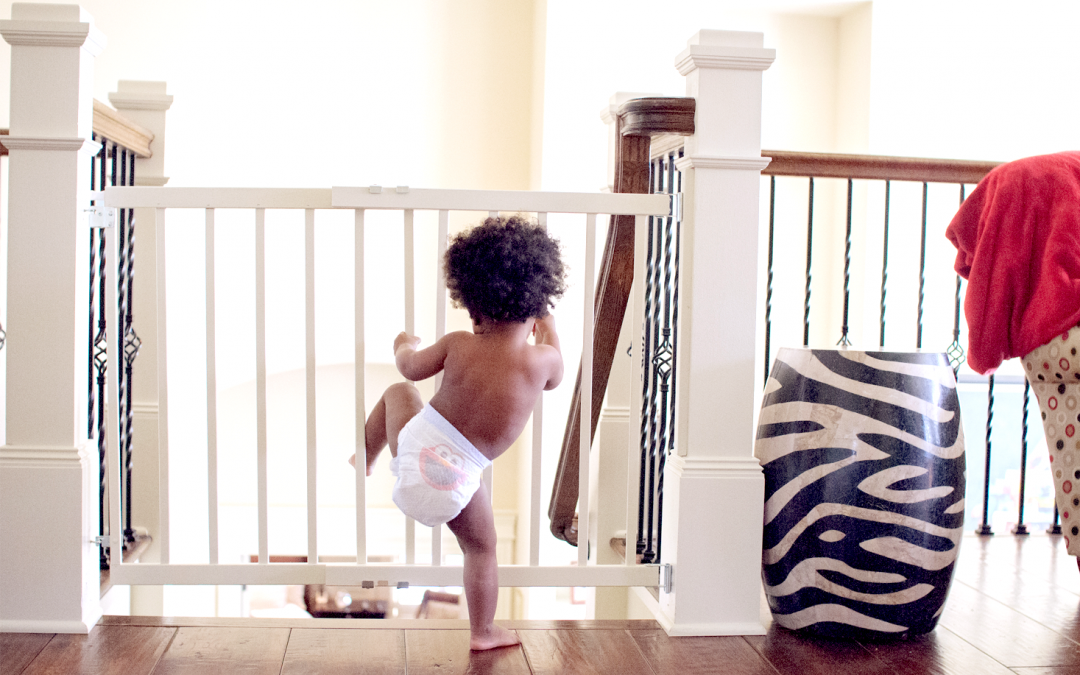Have you noticed your Facebook feed filling up with tons of baby pictures? Maybe you’re the one sharing those pictures! We congratulate you on your new addition. Now, it’s time to sit down and make a list of all the things that pose a danger around your house. We’re here to help you babyproof your home and make sure you address the things you may not have even thought about!
Babyproof the Big Stuff
Walk around your house, room by room, making note of things that you notice right away need to be addressed:
- Outlets. You can buy these nice outlet covers on Amazon. They allow you to slid the cover over to plug in your cord. These are nice compared to the old plastic covers you’d have to take out and keep track of while using an outlet.
- Coffee tables. Babies and toddlers are the same level as low surfaces. As they crawl around and learn to walk, they will inevitably stumble. So it’s important to make sure all sharp corners have a cover to protect against hurting your baby’s head.
- Drawers and Cabinets. Kids are curious and like to get into everything. Make sure you have some type of guard or lock. If your child risks getting into a cabinet or drawer, they may access something sharp, risk objects falling on them, or worse.
- Stairs. The easiest way to keep your child safe is to put up a baby gate. Keep in mind you might have to put on the top and bottom of the staircase depending on how your home is set up.
- Guard up. Put a guard or shield up in front of your fire place so your child can’t get close and burn themselves.
- Shades. Invest in cordless blinds or shades for your windows. This way your child doesn’t have access to a cord and accidently get wrapped up in it.

These are usually the tasks that come to mind immediately when you think about what you need to babyproof around your home. Here are things in each room you may not have thought of already.
The Bathroom
- The toilet. It’s easy for a child to try and lift up the lid. Not so easy for them to gently put it down. Purchase a toilet lid lock for each bathroom. This device helps keep your child safe and keeps them from accidently putting any toys or other items in there that could mess up your plumbing.
- Don’t ever leave your child alone in the tub.
- Keep your medicines and cleaning supplies on high shelves and out of your child’s reach.
- Check the bath water temperature with a thermometer so you don’t burn your baby.

The Kitchen
- The bottom shelves best hold things that are safe for your baby to find, like pots and pans, paper products, and plastic containers. Move your chemicals and cleaning agents to a higher shelf.
- Nonskid pads. If you have a rug in your kitchen, you’ll want to put a non-skid pad underneath your rug. If your little one is crawling or runs across it, the rug won’t slip out from under them.
- Magnets. Magnets are a choking hazard. So it’s a good idea to keep them higher up on your fridge and out of reach.
- Have a pet? Move their uneaten food out of your child’s reach, and clean up any kibble on the floor. These small food pieces are a choking hazard.
- Put latches on the side of your oven. You don’t want your child to reach up and use their weight to pull the door down. Regardless of whether the oven is hot or not, this kitchen appliance is dangerous.

The Nursery
- The U.S. government made drop cribs illegal. You want to make sure your crib slats are 2 3/8 inches (or less) apart.
- Empty the crib. Take out blankets, pillows, and stuffed animals. SIDS (Sudden Infant Death Syndrome) is less likely to happen in an empty crib. Make sure your child is also sleeping on their back.
- Once your baby is old enough to stand up, take down any hanging mobile you have. They can pull on this and choke on the toys.
- Keep their toys in an open box. Just like the toilet, you don’t want the toy lid to slam on their fingers.


